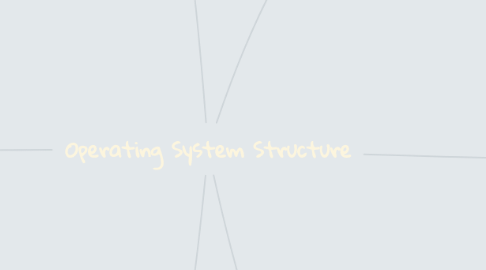Operating System Structure
by Syamimi Hafazi


1. Microkernel
1.1. Small operating system core
1.2. Contains only essential core operating systems functions
1.3. Benefits of a Microkernel Organization
1.3.1. Extensibility
1.3.2. Flexibility
1.3.3. Reliability
1.3.4. Portability
1.4. External subsystems
1.4.1. Device drivers
1.4.2. File systems
1.4.3. Virtual memory manager
1.4.4. Windowing systems
1.4.5. Security services
2. Communication Models
2.1. Communication may take place using either message passing or shared memory
3. Operating System Services
3.1. User interface
3.2. Program execution
3.2.1. ally
3.3. I/O operations
3.4. File system manipulation
3.5. Communications
3.6. Error detection
4. System Calls
4.1. Provide the interface between a running program and the operating system
4.2. Types of System Calls
4.2.1. Process Control
4.2.2. File Management
4.2.3. Device Management
4.2.4. Information Maintenance
4.2.5. Communications
4.2.6. Protection
5. Layered Approach
5.1. The operating system is divided into number of layers(levels), each built on top of lower layers
5.2. Advantage
5.2.1. Simplicity of construction and debugging
5.3. Disadvantages
5.3.1. The careful definition and interaction of the layers
5.3.2. Less efficient
6. Operating System Design
6.1. Start by defining goals and specifications
6.1.1. User goals - operating system should be convenient to use, easy to learn, safe and fast
6.1.2. System goals - operating system should be easy to design, implement and maintain as well as flexible, reliable, error free and efficient
